Testing ordering interventions: Appendix D Additional Tables and Figures
Additional tables and figures relevant to the project.
Table 4. Baseline demographic characteristics
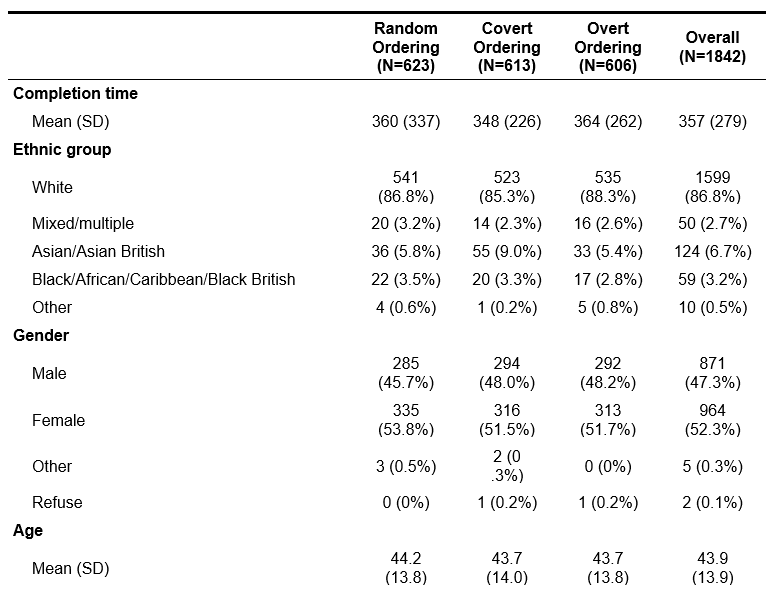
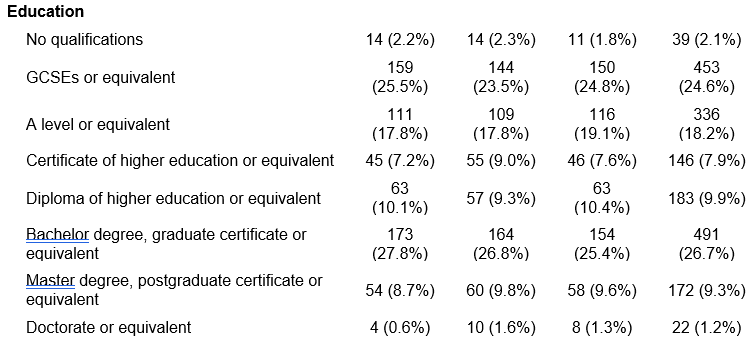
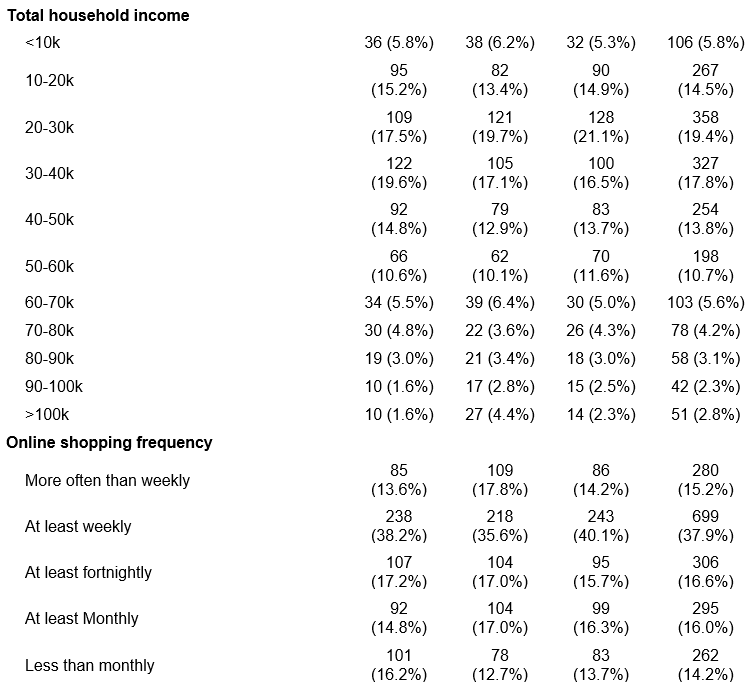
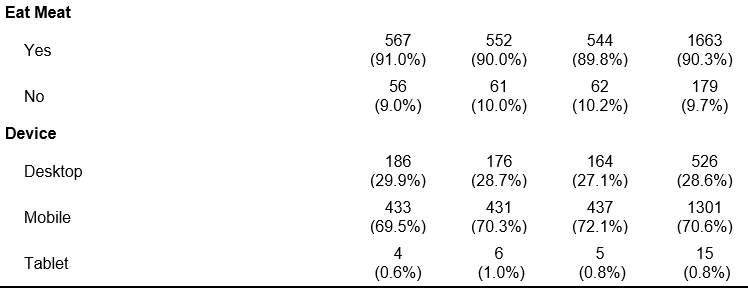
Table 5. Summary of secondary outcomes
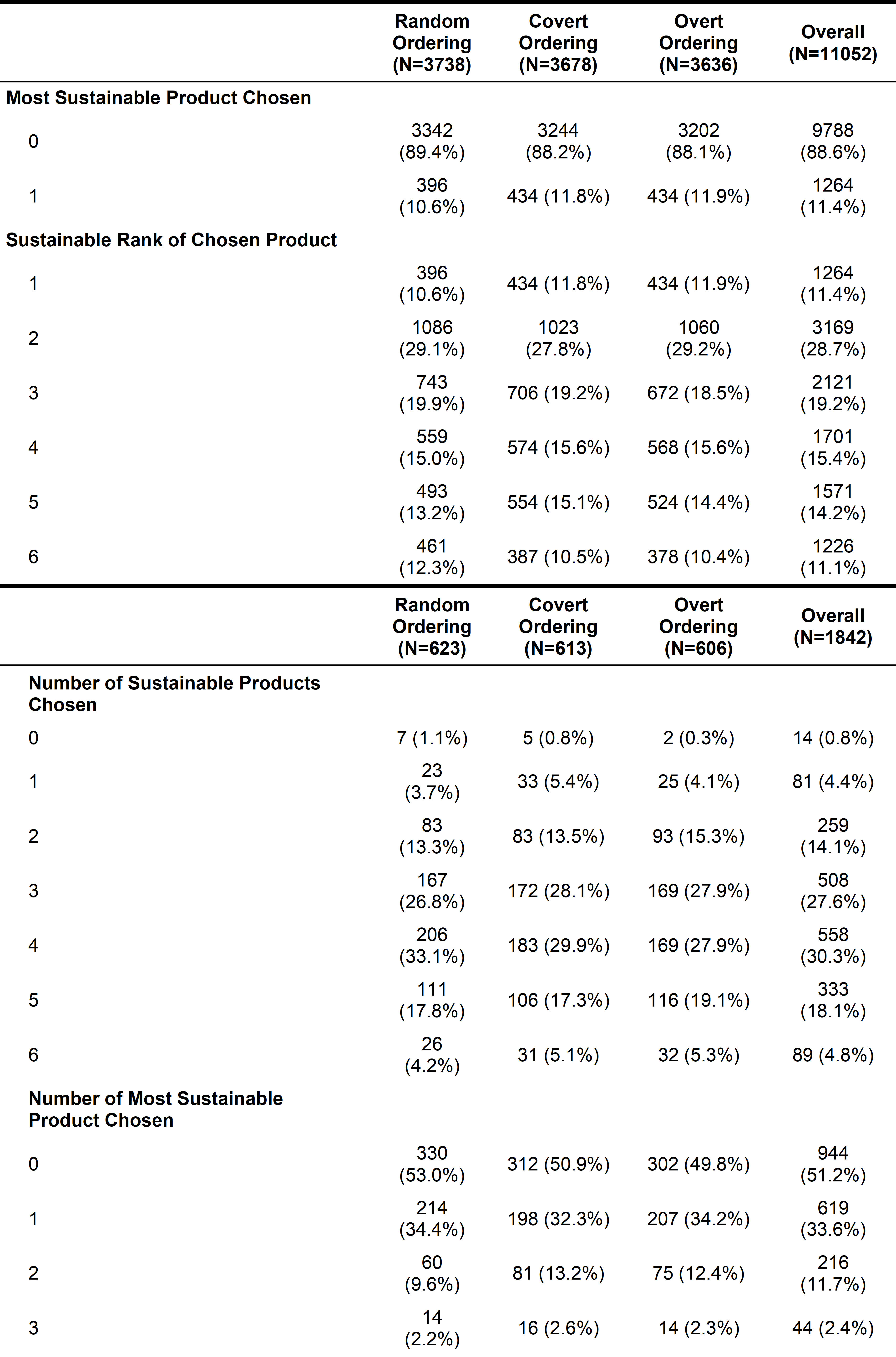
Table 6. Basic model with all potential covariates

Table 7. Optimal model for first secondary outcome

* Overt ordering and covert ordering are indicator variables of the experimental conditions, with the control random ordering as the reference level; the coefficients for Overt/Covert ordering show the difference between these conditions and Control random ordering.
Table 8. Optimal model for second secondary outcome

* The coefficients of intercepts show the differences in baseline odds ratios of choosing a product that has a sustainability rank of 2 versus 1, 3 versus 2, 4 versus 3, 5 versus 4, and 6 versus 5. Overt ordering and covert ordering are indicator variables of the experimental conditions, with the control random ordering as the reference level; the coefficients for Overt/Covert ordering show the difference between these conditions and Control random ordering.
Table 9. Multiple comparison of position effects with Tukey’s correction
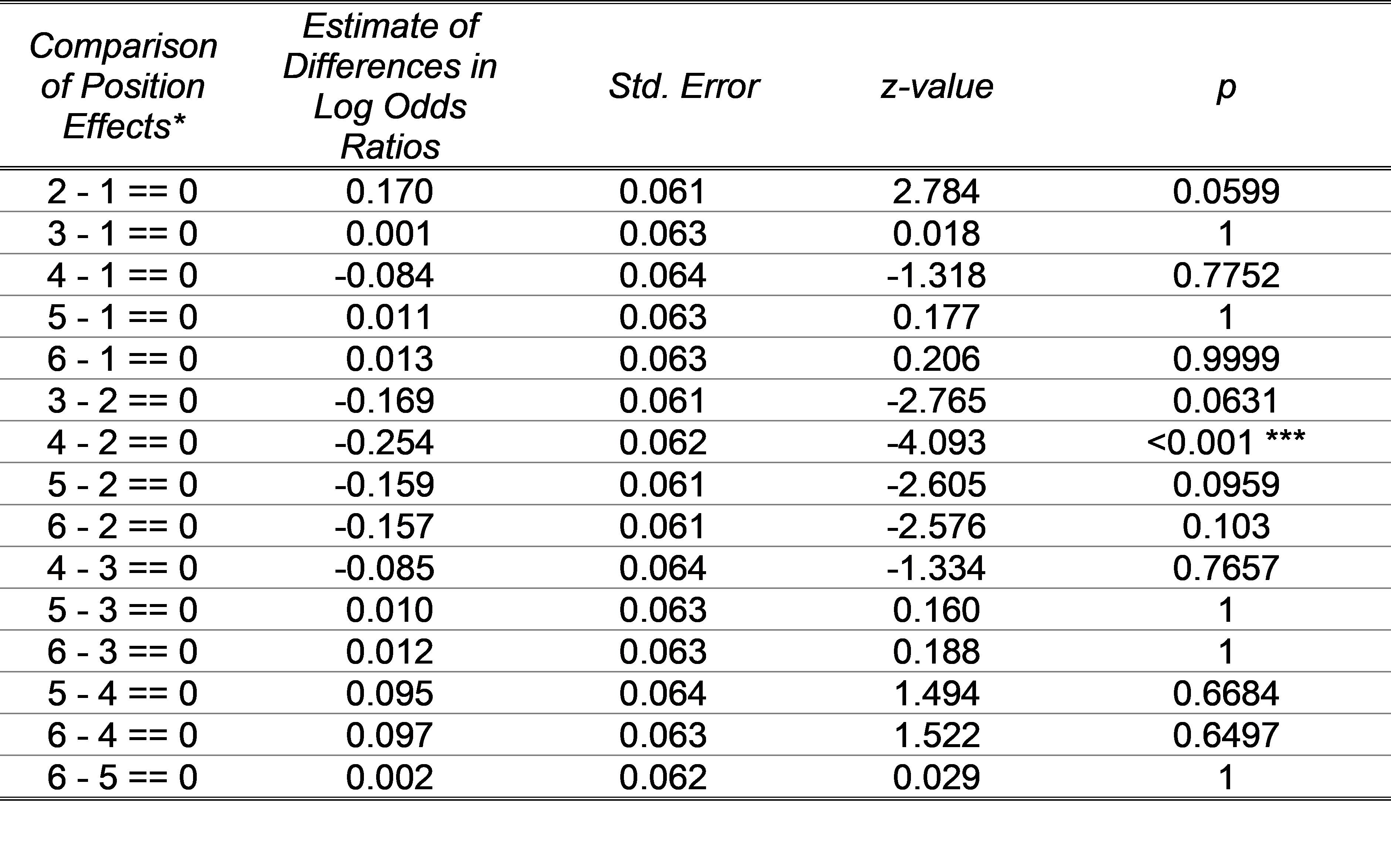
| Comparison of Position Effects (footnote 1) | Estimate of Differences in Log Odds Ratios | Std. Error | z-value | p |
|---|---|---|---|---|
| 2 - 1 == 0 | 0.170 | 0.061 | 2.784 | 0.0599 |
| 3 - 1 == 0 | 0.001 | 0.063 | 0.018 | 1 |
| 4 - 1 == 0 | -0.084 | 0.064 | -1.318 | 0.7752 |
| 5 - 1 == 0 | 0.011 | 0.063 | 0.177 | 1 |
| 6 - 1 == 0 | 0.013 | 0.063 | 0.206 | 0.9999 |
| 3 - 2 == 0 | -0.169 | 0.061 | -2.765 | 0.0631 |
| 4 - 2 == 0 | -0.254 | 0.062 | -4.093 | <0.001 *** |
| 5 - 2 == 0 | -0.159 | 0.061 | -2.605 | 0.0959 |
| 6 - 2 == 0 | -0.157 | 0.061 | -2.576 | 0.103 |
| 4 - 3 == 0 | -0.085 | 0.064 | -1.334 | 0.7657 |
| 5 - 3 == 0 | 0.010 | 0.063 | 0.160 | 1 |
| 6 - 3 == 0 | 0.012 | 0.063 | 0.188 | 1 |
| 5 - 4 == 0 | 0.095 | 0.064 | 1.494 | 0.6684 |
| 6 - 4 == 0 | 0.097 | 0.063 | 1.522 | 0.6497 |
| 6 - 5 == 0 | 0.002 | 0.062 | 0.029 | 1 |
*Each row tests a null hypothesis that the probability of being chosen does not differ for the two positions, e.g. 2 - 1 == 0 tests the hypothesis that Position 2 does not differ from Position 1
Table 10. Responses to attitudinal questions in questionnaire
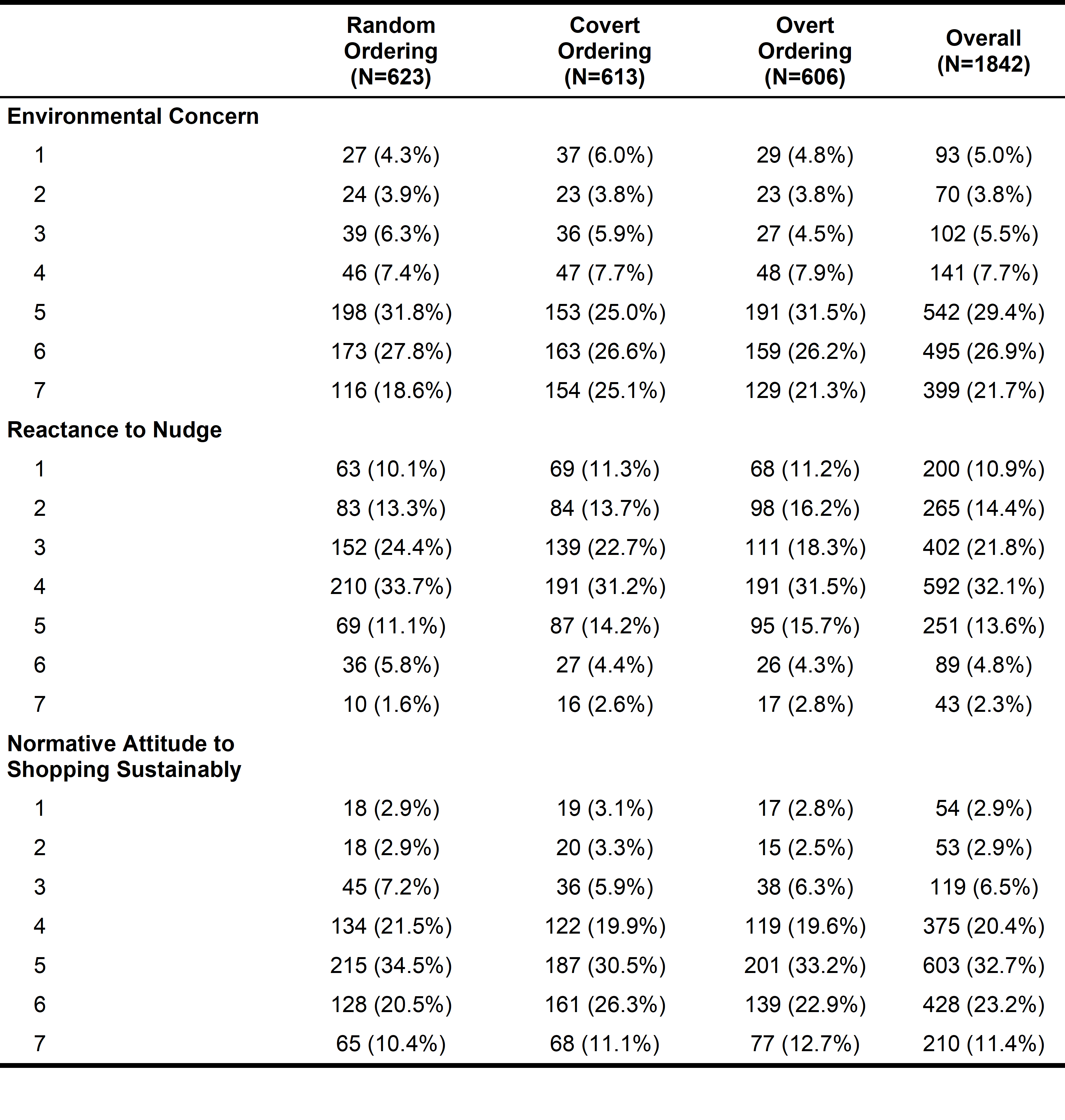
Table 11. Percentage of participants choosing each answer to the question about the product ordering in the overt arm, split by device

| Products ordered by/ Device | Desktop | Mobile | Tablet |
|---|---|---|---|
| Popularity | 22.6% | 20.4% | 20.0% |
| Price | 17.1% | 18.5% | 20.0% |
| Sustainability | 34.2% | 14.2% | 0.0% |
| Healthiness | 3.1% | 7.8% | 0.0% |
| Randomly | 15.9% | 30.2% | 60.0% |
| Don't know | 7.3% | 8.9% | 0.0% |